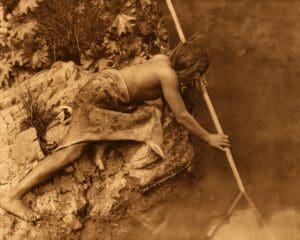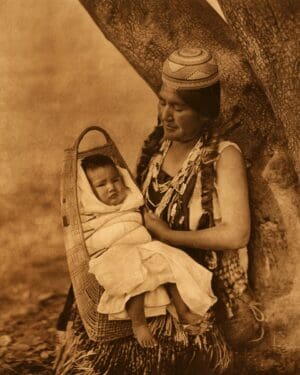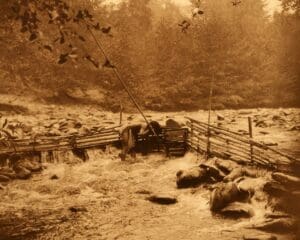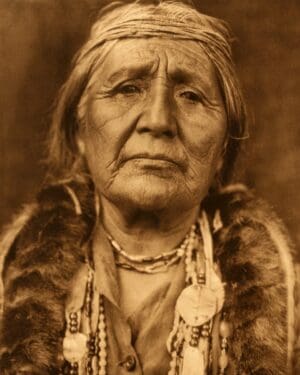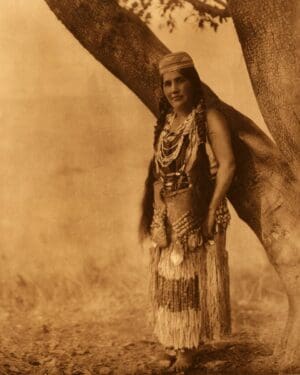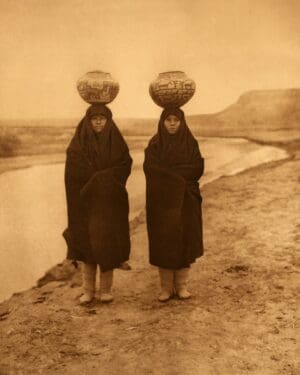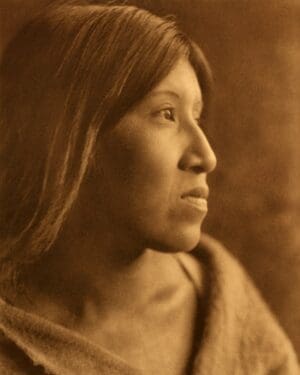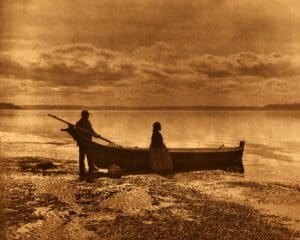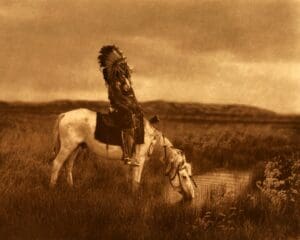Hupa Native Americans
Hupa Indian Photos by Edward S. Curtis
Tribal Summary
Dress
The ordinary dress of men was a deerskin loin-cloth. Deerskin moccasins with elk-hide soles, and deerskin leggings, were worn in the forest, and fur robes about the shoulders in cold weather. The woman’s dress was a knee-length skirt of deerskin open at the front, where it revealed a fringe apron consisting of strung pine-nut shells with banded ornamentation of Xerophyllum grass. A bowl-shaped basketry cap was ordinarily worn. Moccasins and leggings were used only for traveling. Both men and women parted the hair in the middle and allowed it to hang in two ropes in front of the shoulders; but men sometimes arranged it in a single rope behind. Those who could afford them had ear-pendants, either abalone-shell discs or strung dentalia with red woodpecker-feathers protruding from the larger end. Most women had vertical lines tattooed on the chin.
Dwelling
The dwelling was a rectangular structure approximately eighteen feet square, six feet high at the peak and four feet at the eaves. The material was cedar posts and poles and split cedar planks. The wall-boards were upright and the roof-boards perpendicular to the eaves. The roof itself was truncated . Entrance was through a circular hole little more than a foot and a half in diameter. This was at the ground level in the second plank from the left-hand (to the occupants) corner of the end facing the river, and gave on to a stone pavement that crossed the front of the house. In the central part of the enclosed space was a pit ten to twelve feet square and four or five deep, in which the family activities were carried on. Men and boys commonly slept in the sudatory, a partly subterranean, plank-roofed structure, approximately square or oblong, with an excavation four feet deep.
Food
Vegetal foods were of great variety. Acorns, dried, crushed in the mortar, leached, and boiled to a mush, were the principal staple. The parched and ground seeds of certain grasses and other plants, such as tarweed, were second in importance. Various nuts, bulbs and corms, berries, and green shoots were included in the Hupa diet. Deer, elk, all the local rodents and game birds were taken for their flesh, as ·well as for their hides and
feathers. Salmon and lampreys were plentiful in Trinity river, and shell-fish were obtained by barter. The modern Hupa declare that their ancestors never ate birds of prey, carnivora, reptiles, and insects, as did most California Indians.
Showing 1–9 of 13 results
-
Sale!
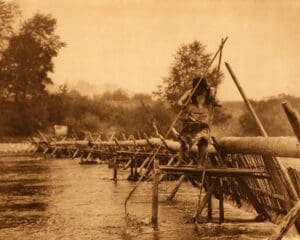
Fish-weir across Trinity River – Hupa
$18.95 – $120.95 -
Sale!

Fishing from canoe – Hupa
$18.95 – $120.95 -
Sale!

Fishing platform on Trinity River – Hupa
$18.95 – $120.95 -
Sale!

Hupa fisherman
$18.95 – $120.95 -
Sale!

Hupa jumping dance costume
$18.95 – $120.95 -
Sale!

Hupa mother and child
$18.95 – $120.95 -
Sale!

Hupa trout-trap
$18.95 – $120.95 -
Sale!

Hupa woman
$18.95 – $120.95 -
Sale!

Hupa woman in primitive costume
$18.95 – $120.95



